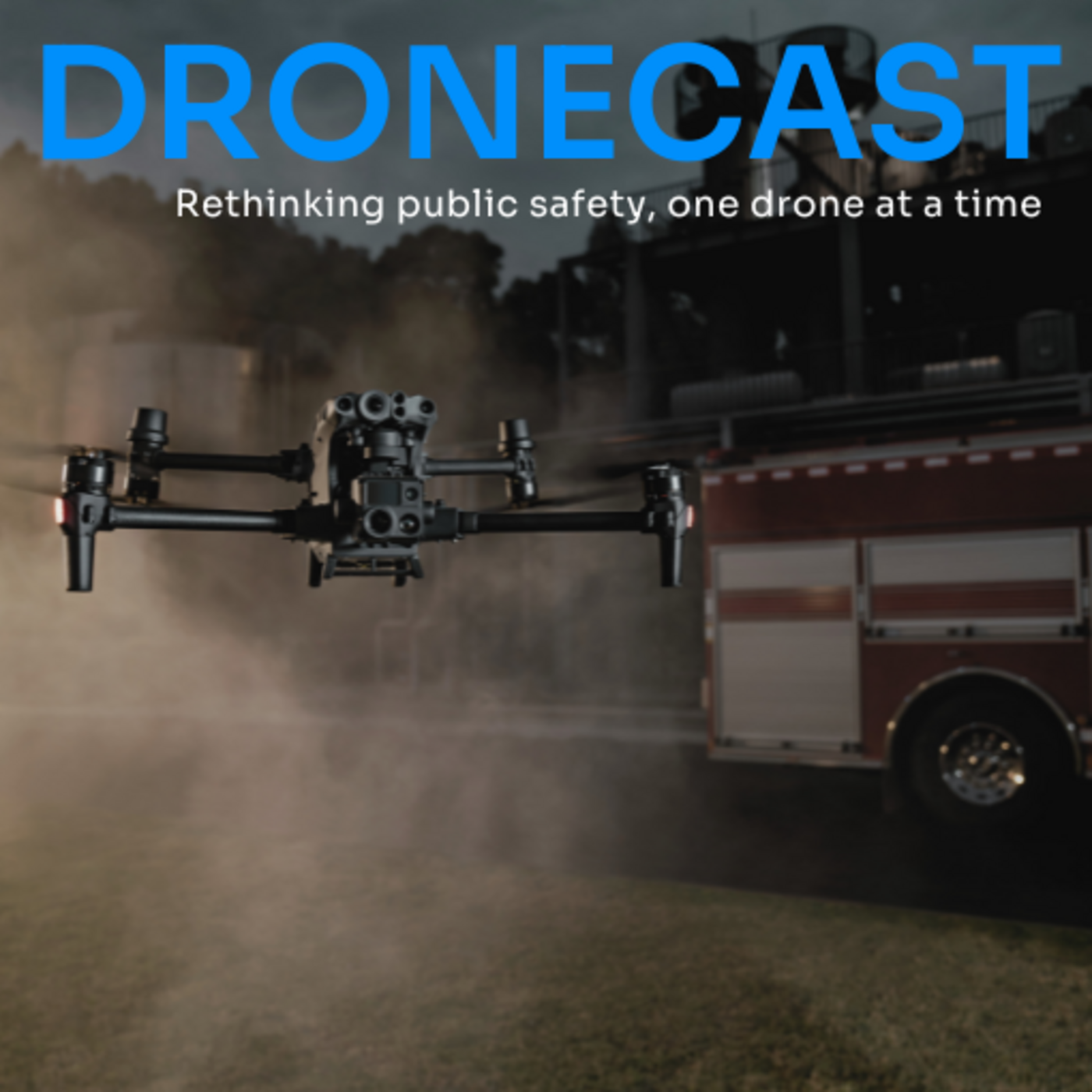The Certificate to Be Dangerous: Why Part 107 Isn't Enough with Greg Reverdiau
July 8, 2025

In Part 1 of this eye-opening DroneCast conversation, host Joe Kearns sits down with Greg Reverdiau, co-founder of the Pilot Institute and veteran aviation expert, to explore the future of drone training in public safety. Moving beyond basic Part 107 certification, Greg shares practical insights into building confident, capable drone teams through structured programs, NIST-based proficiency standards, and scenario-based learning. Whether you're starting a program or refining existing training, this episode offers actionable guidance to raise your team's readiness and performance.
In Part 1 of this insightful DroneCast series, host Joe Kearns speaks with Greg Reverdiau, co-founder of the Pilot Institute and former program chair at Embry-Riddle Aeronautical University, to examine how drone training in public safety must evolve beyond foundational certification.
Greg brings decades of experience in both manned and unmanned aviation to the discussion, highlighting the critical need for standardized, scenario-based, and platform-specific training frameworks. He explains why relying solely on Part 107 certification leaves public safety drone teams underprepared for the demands of real-world operations.
The conversation covers the role of NIST standards in objectively measuring pilot proficiency, the importance of integrating Crew Resource Management (CRM) and Aeronautical Decision Making (ADM), and how to apply aviation best practices to improve safety and operational outcomes. Greg also discusses emerging state-level training standards that reflect the unique demands of different regions.
This first installment sets the stage for a deeper dive into program development and operational strategy in Part 2, offering foundational strategies for any agency looking to move from basic compliance to operational excellence.
What You'll Learn:
- Why Part 107 is only the starting point for public safety drone teams
- How to implement NIST standards to assess pilot proficiency
- The value of platform-specific training and regular skill checks
- How to apply CRM and ADM principles from manned aviation
- Why checklist protocols and emergency planning are essential
- How scenario-based training prepares teams for real-world missions
- What state-led training initiatives mean for regional drone programs
Helpful Links:
- Fill out the Audience Form here.
- Explore more episodes and insights on the official DroneCast website: dronesense.com/dronecast
- Ready to launch or enhance your drone program? Get Started with DroneSense today!
Episode Highlights:
- [06:45] The Foundation of Drone Training
Greg Reverdiau emphasizes that education must be the first priority for any public safety drone program, starting with comprehensive ground training before touching any equipment. He explains that proper initial training shapes how operators will function throughout their careers and helps prevent costly mistakes in the public eye. Public safety agencies face unique regulatory requirements and heightened scrutiny, making thorough training essential for managing liability and ensuring operational success. Departments should begin with ground training on regulations and COA requirements, then progress to hands-on flight instruction. Training programs should be structured to build both technical competency and regulatory compliance while fostering a culture of continuous learning. - [12:09] Beyond Part 107
Greg reveals that while the Part 107 certificate provides basic knowledge, it's just the theoretical foundation and doesn't ensure operational competency. He emphasizes that public safety agencies need role-specific training tailored to their unique missions, whether SWAT operations or firefighting. The NIST standards offer a standardized way to measure progress and proficiency across departments through repeatable exercises. Agencies should implement platform-specific training for each drone model they operate, similar to manned aviation checkout procedures. Regular proficiency checks should be conducted at least annually since drone operation skills can deteriorate quickly without consistent practice. - [27:17] Scenario-Based Training Excellence
Greg advocates for turning real-world incidents into training scenarios to prepare pilots for actual operations. This approach allows departments to learn from both successes and failures that have occurred in the field, creating more relevant and engaging training experiences. He stresses the importance of implementing proper checklist procedures, especially for complex drone systems that require assembly or special handling. Two-person verification systems help prevent accidents and ensure all safety protocols are followed correctly. This comprehensive approach to scenario training helps build both technical skills and operational judgment. - [29:42] Measuring True Proficiency
Greg explains that flight hours alone don't necessarily indicate pilot competency, as the quality of experience matters more than quantity. He draws parallels to manned aviation, where diverse operational experience is more valuable than simply accumulating basic flight time. The NIST standards provide objective benchmarks for measuring actual pilot proficiency through specific skill demonstrations. This standardized approach allows departments to evaluate pilots based on demonstrated capabilities rather than just time logged. The focus should be on achieving competency in required skills, recognizing that different pilots may progress at different rates.
Dronecast: Rethinking Public Safety, One Drone at a Time Podcast is handcrafted by our friends over at: fame.so
Previous Guests include: Matt Rowland, Jason Burnside
Check out our 3 most downloaded episodes:
Previous Guests include: Matt Rowland, Jason Burnside
Check out our 3 most downloaded episodes: